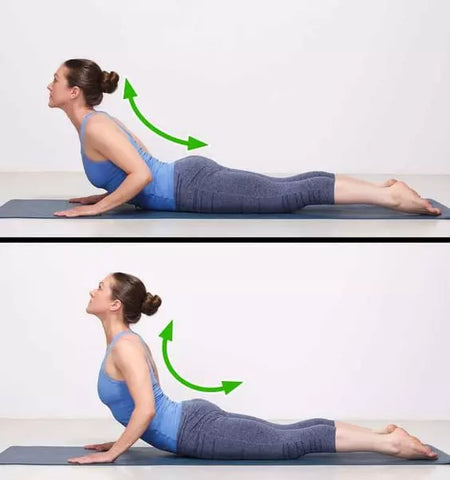How to Properly Use a Foam Roller on Your Back
In this press release, we will discuss the benefits of foam rolling, how to choose the right foam roller for your needs, and how to properly use a foam roller on your back.

Benefits of Foam Rolling
Foam rolling is an effective way to target trigger points, or knots, in your muscles. Trigger points are often the result of overuse, injury or poor posture, and can cause pain, stiffness and reduced mobility. By applying pressure to these trigger points, you can help release the tension and increase blood flow, promoting faster recovery and a range of motion.
Foam rolling can also help with relaxation and stress management. The controlled pressure applied to your muscles can activate your parasympathetic nervous system, leading to a state of relaxation and improved sleep patterns. Additionally, foam rolling has been shown to improve circulation and reduce inflammation, which can lead to an overall decrease in pain and discomfort.
Selecting the Right Foam Roller
There are many different types of foam rollers on the market, and choosing the right one can make a big difference in your foam rolling experience. Here are some factors to consider when selecting a foam roller for your back:
Density: Foam rollers come in different densities, which can affect the amount of pressure applied to your muscles. Generally, the denser the foam roller, the more intense the pressure. Beginners may want to start with a softer foam roller, while experienced users may prefer a denser option for deeper muscle release.
Size: Foam rollers come in different lengths and widths, as well as different shapes, such as flat or contoured. When selecting a foam roller for your back, consider the size of the roller in relation to your body size and the area of your back you want to target. A smaller, more contoured foam roller may be easier to use on specific areas, while a larger option may provide more coverage across your back.
Material: Foam rollers can be made from a variety of materials, such as foam, rubber, or PVC. The material can affect the durability of the roller, as well as its performance. Foam rollers made of high-density EVA foam tend to be long-lasting and effective for muscle release, while rubber or PVC options may offer more grip.
Proper Use of a Foam Roller on Your Back
Before you use a foam roller on your back, it’s important to understand the proper form and technique. Here are some steps to follow:
1. Begin by placing the foam roller on the ground and lying on your back, with the roller positioned horizontally under your shoulder blades. You may want to use a yoga mat or towel for extra cushioning.
2. Slowly roll forward and backward, using your legs to control the movement. Focus on the muscles along your spine, avoiding contact with your rib cage or neck.
3. If you find a trigger point, pause and hold the pressure on that area for 20-30 seconds. You can adjust the pressure by shifting your weight and positioning your body slightly to one side or the other.
4. Continue to roll for approximately 5-10 minutes, taking breaks as needed. You can also move the roller to other areas of your back, such as your lower back or sides.
5. After foam rolling, stretch your back and shoulders to prevent any muscle soreness.
It’s important to note that foam rolling may cause some discomfort, especially if you have tight or sore muscles. However, if you experience sharp or severe pain, stop immediately and consult with a healthcare professional.
In conclusion, foam rolling can be a beneficial tool for improving your back health and overall well-being. By selecting the right foam roller for your needs and mastering the proper technique, you can experience relief from pain, tension and stress. Remember to listen to your body and take breaks as needed, and to consult with a healthcare professional if you have any concerns.








